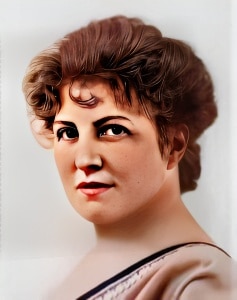 Mary Pickford (1892-1979) was one of the most iconic and influential figures in the history of cinema. Known as “America’s Sweetheart” during the silent film era, she was a pioneering actress, producer, and co-founder of United Artists.
Mary Pickford (1892-1979) was one of the most iconic and influential figures in the history of cinema. Known as “America’s Sweetheart” during the silent film era, she was a pioneering actress, producer, and co-founder of United Artists.
Her career in the film industry spanned over five decades, and her contributions left an indelible mark on the world of entertainment.
Born Gladys Louise Smith on April 8, 1892, in Toronto, Canada, Mary Pickford’s early life was marked by hardship. Her father passed away when she was just six years old, and her family faced financial challenges. To support her family, young Gladys began performing on the stage, using the stage name Mary Pickford, which she would later adopt as her legal name.
Mary’s journey to fame took her from the theater to the burgeoning film industry in the early 20th century. In 1909, she made her film debut in “The Violin Maker of Cremona.” Her talent and charisma quickly made her a sought-after actress, and she appeared in numerous short films.
Pickford’s big break came when she joined the Biograph Company, where she worked under the direction of D.W. Griffith, a pioneering filmmaker. Her time at Biograph allowed her to refine her acting skills and develop her screen persona.
In 1910, she appeared in Griffith’s “In Old California,” marking her first credited feature film role. Over the next few years, Mary Pickford’s popularity soared, and she became a beloved figure in the silent film industry.
One of her most iconic roles was in the 1914 film “ Tess of the Storm Country.” The film’s success solidified her status as a leading lady in the industry. Mary Pickford was celebrated not only for her acting but also for her ability to convey emotion and connect with audiences on a profound level.
In 1916, Mary Pickford co-founded United Artists with Charlie Chaplin, Douglas Fairbanks, and D.W. Griffith. This groundbreaking move gave them creative control over their work and a share in the profits, making them some of the most powerful figures in Hollywood.
Mary’s career continued to flourish, and she starred in films such as “Pollyanna” (1920) and “ Little Lord Fauntleroy” (1921), which showcased her versatility as an actress. She was also known for her signature golden curls, which became a recognizable trademark.
In 1927, Mary Pickford transitioned to sound films with “Coquette,” for which she won the Academy Award for Best Actress. Her ability to adapt to changing technology and maintain her popularity spoke to her lasting appeal.
Despite her enduring fame, Pickford retired from acting in 1933. She continued her work as a producer and remained active in the industry, even becoming one of the co-founders of the Academy of Motion Picture Arts and Sciences.
Mary Pickford’s philanthropic efforts included her work during World War I, where she helped raise funds for war relief. She also contributed to various charitable causes, including those related to children’s hospitals and the film industry.
In 1976, Mary Pickford was awarded an Honorary Academy Award for her contributions to the film industry. Her legacy is celebrated not only for her on-screen performances but also for her pioneering role in the development of Hollywood and her status as a trailblazing woman in a male-dominated field.
Mary Pickford passed away on May 29, 1979, leaving behind a rich legacy in the world of cinema. Her timeless films continue to be cherished by cinephiles, and her influence on the industry remains evident in the countless actors and filmmakers who followed in her footsteps. Mary Pickford’s impact on the art of filmmaking endures as a testament to her enduring talent and pioneering spirit.
Loading live eBay listings...




